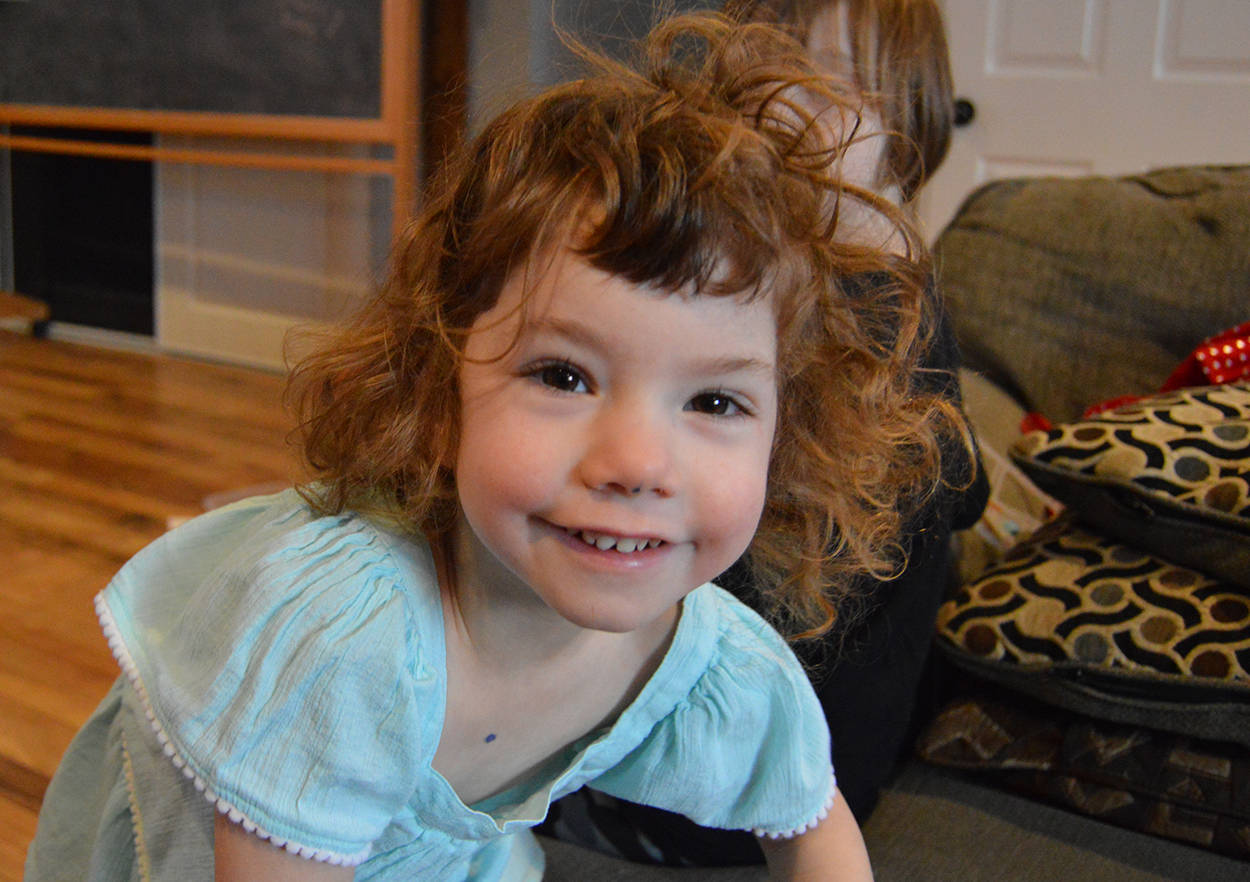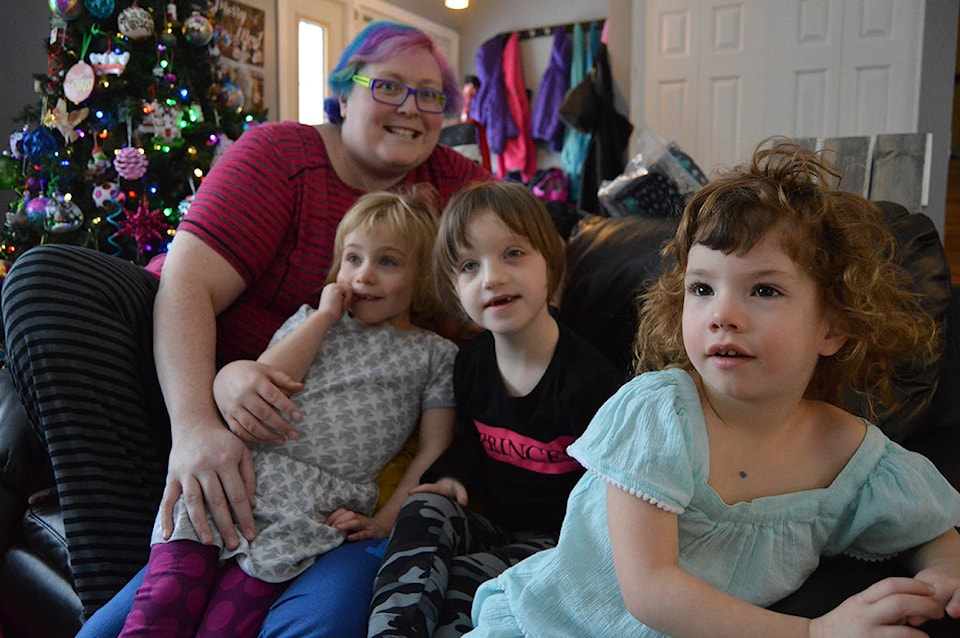It’s lunch time at the Dunn-Reker house, and four happy children bounce around the kitchen waiting for bowls of soup.
Shelley Fiset, a behavioural interventionist and Johanna Joy, a support educator ladle bowls of soup and bring the children over to the table to eat.
It’s a very busy home, which also serves as a classroom for all four children.
Denise Dunn-Reker and her husband adopted four infant autistic children; Sean, 9, Adalyn,6, Mylie, 4 and Emma, 3.
“I grew up with children who have special needs,” said Dunn-Reker, who lives in Elkford.
Her eldest, Sean, was in school for two years in the town before she decided to homeschool him.
Dunn-Reker was one of the local parents in the Elk Valley who completed a recent survey by the B.C. Federation of Parent Advisory Councils on special needs assistance in schools.
This survey found that in some districts children are being sent home when there are no EAs (Educational Assistants) available to work with them.
In addition, 40 per cent of the parents who filled out the survey said their children with special needs were being sent home on a regular basis due to behavioural issues.
That’s not an experience that Dunn-Reker shared, but she says that she removed her son from the public school system in the Elk Valley because his needs were not being met.
She says after numerous incidents, issues with communication and anxiety; the best option would be to pull him out of the system.
“They didn’t know how to handle him in a classroom situation,” said Dunn-Reker.
Sean is unable to learn in a sit-down environment all day.
In that setup he was prone to autistic episodes.
As a result, he spent much of his time wandering up and down the halls in the school.
She says the school requested that Sean be prescribed medications for anxiety and ADHD to help with focusing in the classroom.
Dunn-Reker says one major problem was that once Sean turned six, he no longer received funding for a behavioural interventionist, who helps children with autism develop life skills and coping strategies for anxiety.
“If EAs were trained with a behavioural consultant, or worked alongside them in the school system, we wouldn’t have the problems that we do with behaviour,” said Dunn-Reker.
She says that while including children with special needs in classrooms may be important for socialization, keeping them in a classroom setting all day didn’t help her son.
“They still need a place to go to be taught in different ways,” said Dunn-Reker.
She says that children with autism do not learn the same as children without special needs.
Many require significant amounts of attention, which is difficult to provide with a limited number of EAs in a school.
“I don’t think Sean could go back into the school system,” she said. “I don’t think they’re equipped to deal with him.”
Susan Hoath, grandmother of a 23-year-old autistic man also filled out the survey.
Her grandson,Wade, did not finish school in the public school system either, after deciding to leave of his own accord.
“I think part of it was, he wasn’t diagnosed very young and should have been,” said Hoath, who watched her grandson struggle with bullying.
This made it difficult to get him to attend school.
She says Wade needed one-on-one assistance, but given the resources, this just wasn’t feasible.
“You can’t give these kids individual attention when you have 30 or 40 in a classroom,” she said. “You have to really be an advocate for your kid. You really have to push.”
This is exactly what parents like Dunn-Reker did.
After seeing that classroom education simply wasn’t working for her son, she decided to start with a homeschooling program called Self Design.
This system receives funding for behaviour interventionists and support educators for her children, who come into the home on a daily basis for part-time sessions with them.
They read in the living room, they work through simple tasks and build skills in a one-on-one setting.
“It’s not a babysitting service,” said Dunn-Reker. “It’s really showing that we’re working with these kids…on how they need to learn.”
She says that as a mother, there is still guilt about her son missing out on fun social activities, but ensures that they get to go to the pool, church and skating at the arena on a weekly basis.
“These children all deserve an education,” she said.

